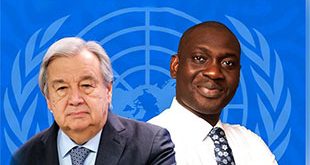
By Charles Onyango-Obbo
Uganda is a medium-size African country, but at 71 has the continent’s second largest cabinet. Even more remarkable, it has the world’s third largest cabinet after North Korea!
The question is, to what end? There is an increasing body of literature that argues, quite convincingly, that there is method to such African madness.
Leonardo A. Arriola famously makes the point in “Patronage and Political Stability in Africa” that cabinet size is a “rational” strategy which insecure African leaders use to lower the risk of being overthrown by buying off rivals, and rewarding their followers. And, Arriola finds a lot of evidence to support his case, and suggests that each additional cabinet appointment lowers the “coup hazard” by 23% to 25%.
The strange thing is none of these are true for Uganda. President Yoweri Museveni had his smallest cabinet in the first few years after he came to power in 1986, and was insecure enough that he had to ban free political activity and rule under the “no-party”, a cute name for a one-party dictatorship. The sharpest increase in cabinet size came after the 1996 when, flush with a new constitution that had been promulgated in 1995, Museveni had won a resounding election victory in 1996. Then Museveni had such a massive mandate, it was the best time for him to trim his cabinet. Instead, he did the opposite.
Museveni therefore would seem not to have acted rationally, because he doled out less patronage when he was weak, and more when he was fairly entrenched. It’s true that the 2001 election, in which his former ally, Dr Kizza Besigye’s electoral challenge forced Museveni into what was easily the biggest theft of votes in Uganda’s election history, posed the biggest challenge to his rule. But the increase of cabinet at this point was still not dramatic.
In global terms, the Museveni political star has continued to fall, but while the president has persisted in using state jobs (and the instrument of “presidential adviser”) to buy support, something has happened to the character of his cabinet.
In qualitative terms it is not an isolated case because an overwhelming number of his appointees to other top state positions are from his western region which he has in a vice grip and still returns the highest vote for him. Therefore, going by Arriola’s theory, Museveni does not use cabinet to expand his base. Actually he uses it to shrink it – and that might, at first, seem irrational.
However, there is something quite complex going on. Though Museveni ruled Uganda as a one-party state for 19 years, at the start he did not really have a party as such. The older political parties, the Democratic Party (DP), the Uganda People’s Congress (UPC), the Conservative Party (CP), disgraced as they might have been, still commanded substantial support. Museveni’s NRM could not dislodge them through conventional political competition because it was not a national mass movement, but the political wing of the rebel National Resistance Army in the bush.
So apart from suspending the parties, Museveni needed to do something else – build up the NRM. And he chose to build it as a state party whose organisation, functions, and resources were closely fused with the government. Historically in Uganda, as indeed almost everywhere else in the world, parties need some safe constituencies and regions where they are assured of 60% to 75% of the vote, then they can compete marginally in the rest of the country for the rest of the vote to “top up” and win. The UPC had been entrenched in the north and east, and the DP in Buganda. The two parties contested almost equally in the west.
Because Museveni is from the west and it was also there that UPC and DP were no longer a religion, he seemed to decide strategically that political investment in the vote-rich western Uganda would pay off more quickly, and give him a regional “lock down”. Thus while it might look irrational that Museveni’s huge cabinet is counter-productive because it is skewed toward a few tribes and his home region, it actually makes sense if seen as strategy for building your typical African political party. And he could afford this sectarian approach, precisely because he felt secure. Indeed when Uganda returned to multiparty politics in 2005, and then elections in 2006, that calculation paid off handsomely for Museveni. So, while Arriola is right that an insecure leader will expand his cabinet, Uganda’s case suggests that a secure one could also expand it.
The second peculiar reason for the gigantic cabinet size in Uganda is economic. Outside of Somalia, which has no government to speak of, Uganda is easily the most deregulated economy in Africa. Apart from executive agencies like the Uganda Investment Authority and Revenue Authority, Uganda is the only African country without a parastatal sector to speak of. Even Kenya, which is one of Africa’s longest-running free market economies has myriad of them – the Meat Commission, the Kenya Creameries, and the Wheat Board and so on.
While the country’s economy has recorded impressive growth for most of the last 25 years, because it started from a very low base following nearly 15 years of war and mismanagement, it has not created an incredible lot of wealth. And, in recent years, the growth has not been enough to offer most people the protective net the parastatal sector provided.
For that reason mainstream government, including cabinet has become not just a patronage bank, but an economic distributive mechanism. President Museveni, for example, has got over 120 presidential advisers and assistants, and only about three or so of them ever get to meet or advise him in a year. Most of them do not bring him political capital, and would pose absolutely no threat to him if he discarded them. But he keeps them, for no reason except as a way of paying them a monthly welfare cheque in the form of their salaries.
So, while the majority of appointments in the Museveni government are patronage, a good number of them are also ordinary accommodations. But this does not mean they are harmless. In fact, they are more deadly. There is something transitory about political patronage and the corruption that goes with it. A president with a different mindset and who is sure of his legitimacy can cut the size of a cabinet. Dismissing 120 advisers becomes a problem for Museveni because they potentially become rivals. And, in Uganda’s case, dismantling the more than 600,000 Local Council officials, most them hangers on, is deadly explosive.
The real problem in Uganda therefore is not cabinet size. Cabinet size in the scenario described by Arriola is either a tactical or incidental political issue. In Museveni’s Uganda, cabinet size is something more – it is an essential fact of government.
 The Independent Uganda: You get the Truth we Pay the Price
The Independent Uganda: You get the Truth we Pay the Price




